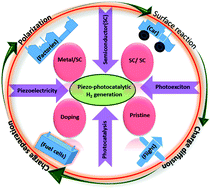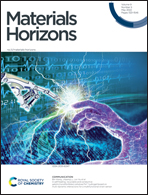Boosting sluggish photocatalytic hydrogen evolution through piezo-stimulated polarization: a critical review
Abstract
To address the growing energy demand, remarkable progress has been made in transferring the fossil fuel-based economy to hydrogen-based environmentally friendly photocatalytic technology. However, the sluggish production rate due to the quick charge recombination and slow diffusion process needs careful engineering to achieve the benchmark photocatalytic efficiency. Piezoelectric photocatalysis has emerged as a promising field in recent years due to its improved catalytic performance facilitated by a built-in electric field that promotes the effective separation of excitons when subjected to mechanical stimuli. This review discusses the recent progress in piezo-photocatalytic hydrogen evolution while elaborating on the mechanistic pathway, effect of piezo-polarization and various strategies adopted to improve piezo-photocatalytic activity. Moreover, our review systematically emphasizes the fundamentals of piezoelectricity and piezo-phototronics along with the operational mechanism for designing efficient piezoelectric photocatalysts. Finally, the summary and outlooks provide insight into the existing challenges and outline the future prospects and roadmap for the development of next-generation piezo-photocatalysts towards hydrogen evolution.



 Please wait while we load your content...
Please wait while we load your content...